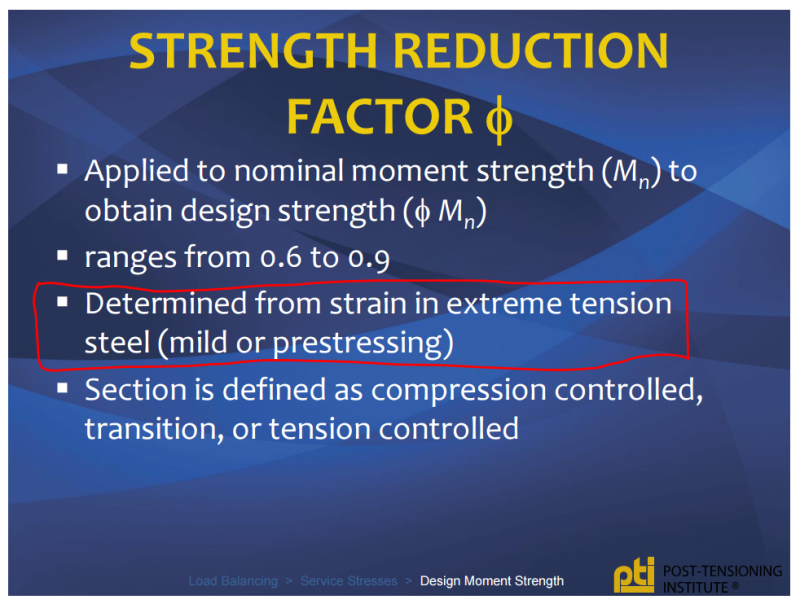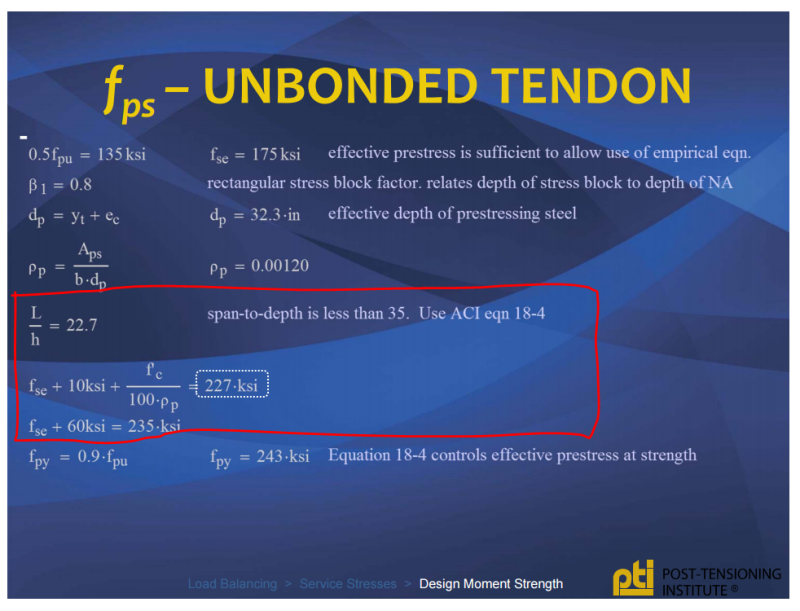rasaonline
Civil/Environmental
- Dec 24, 2010
- 2
When we want to find the type of Unbonded PT beam section in flexure, what depth and strain is used to determine if the section is Tension-Controlled / Compression-Controlled / or in Transition?
Since the PT tendons are unbonbed, Their strain can not be found by strain compatibility. and it has to be found from ACI 318-11 EQ. 18-2 devided by Es=29000ksi.
Please clarify if you want to find NET TENSILE STRAIN, do you take Average of Strain in mild steel and PT tendons or just consider either of them? (Question #1)
ACI is not clear about Unobnded PT.
PTI has an example. (at Here on page 51) which I think can not be true! because they used strain compatibility to find strain in Unbonded PT!!! it is Unbonded!! How could it have the same strain as its surrounding concrete??!!
I have sample calculation below. Do you think it is OK for critical section strength? (Question #2)

Since the PT tendons are unbonbed, Their strain can not be found by strain compatibility. and it has to be found from ACI 318-11 EQ. 18-2 devided by Es=29000ksi.
Please clarify if you want to find NET TENSILE STRAIN, do you take Average of Strain in mild steel and PT tendons or just consider either of them? (Question #1)
ACI is not clear about Unobnded PT.
PTI has an example. (at Here on page 51) which I think can not be true! because they used strain compatibility to find strain in Unbonded PT!!! it is Unbonded!! How could it have the same strain as its surrounding concrete??!!
I have sample calculation below. Do you think it is OK for critical section strength? (Question #2)




